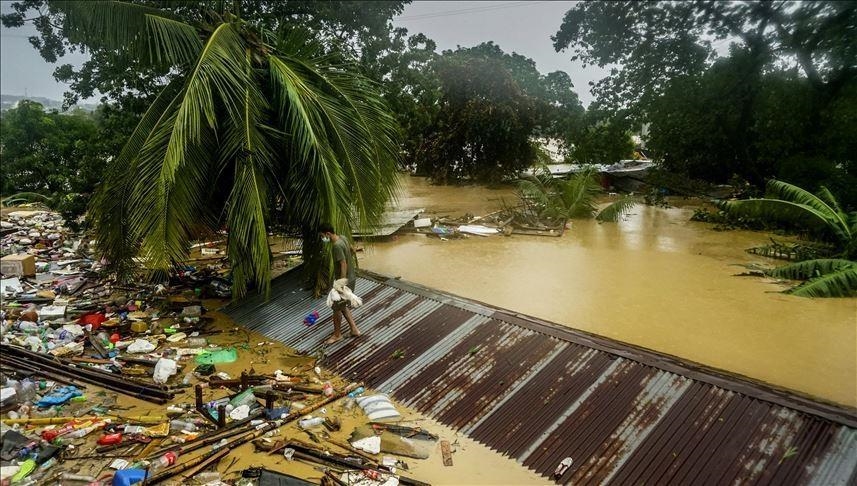As a young girl, who grew up in the suburban area of Ibadan, Southwest, Nigeria, flooding was a regular thing for our communities. It almost became a norm that I question why there’s no flood, whenever it rained heavily. In simple terms, flooding can be said to be overflow of water that submerges land that is usually dry. It usually results to loss of lives and properties. This is why it is referred to as a disaster. Another term is “environment” which I’m confident that it’s not a strange lingo in our community. But when you hear “environment”, what comes to your mind?
Your society? Your community? Your vicinity? Maybe your compound, even. As much as you may not be far from the truth, the environment is quite an extensive concept, beyond one’s society. So, when you talk about the environment, what should come to your mind is everything that contributes to the existence of natural elements and humans, animals, and even plants. Simply put, the environment is the surroundings or conditions in which humans, animals and plants operate.
Biologists also define the environment as the total of all living and non-living things in nature that affect an individual’s survival and development. Now, what makes up the environment? What are the components of the environment? What are the things that come together to aid the operations of both living and non-living things? There are components of the environment, but four major components and they are: (a) Lithosphere (b) atmosphere (c) biosphere (d) hydrosphere. Let’s check out the meanings of these words: (a) Lithosphere: simply refers to the rigid outer part of the earth, consisting of the crust and upper mantle (b) Atmosphere: This is the envelope of gases surrounding the earth or other planet.
Others are (c) Biosphere: The regions of the surface and atmosphere of the earth or another planet occupied by living organisms (d) Hydrosphere: All the waters on the earth’s surface, such as lakes and seas, and sometimes including water over the earth’s surface, such as clouds. For the sake of simplicity, we can say that the environment is made of soil, gas, rocks, water, and ecosystems, the biological components of the earth. In the earlier part of this article, I mentioned that flooding is a disaster because it usually results to loss of lives and properties, but one thing we do not take note of is the fact that what flooding does to us is beyond the loss of lives and properties. Flooding can take away the whole of human existence, if not controlled.
Flood has the capacity to wipe out the entirety of a geographical location, affecting both living and non-living things, and even make that particular location forever inhabitable for humans, animals, and plants. As earlier said, the environment is made up of living and non-living things, the living things, which could be classified as humans, animals, and plants. What about the non-living things? The rocks, the soil, the gas, the water. Who bothers about these other important components of the environment, knowing that they all come together to make the planet habitable? Apart from the popular “loss of lives and properties”, let’s look at the other ways flooding affects the environment because the environmental effects of flooding can be detrimental and they include:
1. Soil and bank erosion: The effects of soil erosion go beyond the loss of fertile land. It has led to increased pollution and sedimentation in streams and rivers, clogging these waterways and causing declines in fish and other species. Degraded lands are also often less able to hold onto water, which can worsen flooding. It can damage vegetation and pollutants carried by flood water can impact on water quality, habitats, flora and fauna. Floods affect the agricultural sector by causing over-saturation, infertility, and soil erosion, damaging the crop fields.
2. Flood washes away the topsoil, which is the richest part of the soil, contains organic matter and other crop nutrients and deposits elsewhere. This eventually leads to a reduction in the soil’s fertility and its sustainable use.
3. Damage to our cultural heritage: In the same way that flooding can damage properties, flood events can damage or destroy assets or sites of cultural heritage value. Particularly vulnerable are monuments, structures or assets made of wood or other soft materials, such as works of art and old paper-based items such as archive records, manuscripts or books. Soil erosion, during flood events, can also destroy buried heritage and archaeological sites.
4. Health risks due to water contamination, housing displacement and economic impacts. Floodwater can mix with pollutants such as agricultural waste, chemicals, raw sewage or metal and can contaminate local waterways that supply water. Flooding makes unclean water find their way into sources of safe water, thereby contaminating it and making it unsafe for use.
It also causes displacement; people and animals are forced to leave their habitats, and this includes wildlife. The eventual consequence is its effects on the economy of such geographical location, as businesses are forthwith, suspended. Even though flooding has its positive sides, which include improving soil fertility, as land may become fertile after being flooded due to the deposition of materials, its negative sides however, outweigh the positives.


1 Comment
orientation about flooding should be carried to the door step of everyone if possible.
Simple things like throwing dirt into the drainage can cause damages later on.